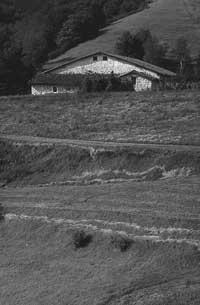Biodiversity in Europe

Since 1992 the word biodiversity is a new word, but not the need to protect the diversity of living things. The steps to be taken by the European Commission for the Conservation of Biodiversity should be designed and in operation in 1997, approved by the Commission itself. At the moment it is not reflected in reality. Therefore, the account will be extended.
In fact, it will not be easy to promote a new culture that considers the conservation of biodiversity as a criterion. Everything is to be done and to dedicate few resources. Therefore, prioritization is a first objective task. As already mentioned in the introduction, the problem of endangered bird species is of urgent resolution, but for this purpose a detailed study of this problem will be necessary; the voluminous reports will hardly increase this trend. Several natural groups in the UK work together to consolidate these priorities. These groups are grouped in the BirdLife International organization, where the joint work of some structures has facilitated access to local information, creating channels to know the situation throughout Europe, for example in a simple way.

The main objective of the project is to ensure the diversity of birds, which implies, on the one hand, the detection and resolution of the factors that threaten bird species and, on the other, to ensure that the necessary conditions for their survival remain in the future, in short, the protection of habitats. The work carried out in recent months has focused on the classification of the main habitats of Europe, which have already been classified in 2,500 areas, fundamental areas for the conservation of these species. From the analysis of European regulations, about 2,000 of them can be classified as Natura 2.000, so they would be included in the Regulations of Protection of Birds and Habitats. However, only half of those 2,500 people are currently within this qualification.
However, while working on this “base of places”, the problem is worsening for the moment. In the next 25 years 24 species of European birds will definitely disappear if no solution is made, and so many other species are in danger of extinction in the medium term. Last year, BirdLife presented to the European Commission a technical report on this subject, detailing in detail the measures to be taken for the protection of species in a situation of serious risk, both those that the Commission itself can promote and, of course, those that could correspond to local authorities. It remains to be seen what these proposals are going to materialize. If international cooperation systems were structured, at least if there were expectations.

The future of 195 bird species is really serious in Europe. Not everyone will suddenly disappear, but the treasure of biodiversity will be lost. In this case, one of the principles that assume all environmental policies is questioned, and that, as we know, one must try to solve the environmental problems in the place where they have originated, and so it is acted in most cases (the paradigm is the treatment and reuse of waste). However, the situation of bird species in Europe requires a more global approach; if any species is endangered in France, its situation will not be more comfortable in Germany. The disappearance of habitats and the expansion of cities are no problems that occur in a single country, if so, bad means!

The agrarian models have a lot to do with all this and the negative impact of this factor on many species of European birds is evident. 40% of threatened bird species in Europe could survive if this situation was taken into account in agricultural projects. For this reason, BirdLife will shortly publish a strategic report for the protection of the main European habitats. The aim of this report is to serve as a basis for the next steps, so it is essential that proposals become a reality in order not to remain on wet paper. In addition to the political will, citizen participation will be essential for the progress of the recommendations to be published together with the report. BirdLife will bring on the table the concern of many who have been remembering for some time: if there are no steps towards conservation, what can be preserved in the near future?





